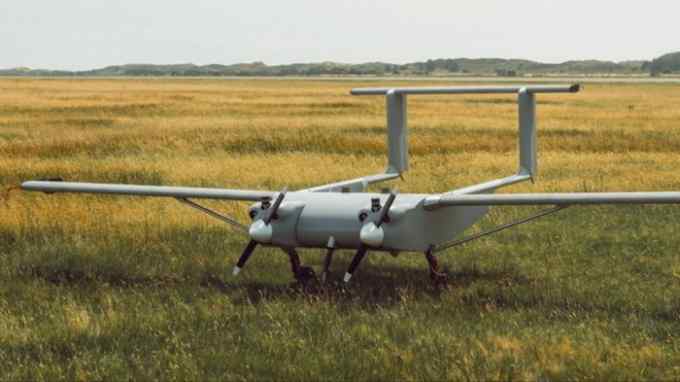DeepL rides high amid AI translation boom

Roula Khalaf, Editor of the FT, selects her favourite stories in this weekly newsletter.
Translation is an ancient art — as old, perhaps, as civilisation itself. Some of the earliest surviving human texts, Mesopotamian clay tablets, include lists of equivalent words in different languages.
Ancient roots, however, are no impediment to innovation, and the rise of “generative” artificial intelligence (AI) — such as OpenAI’s ChatGPT — has triggered a growth spurt in translation technology. Data provider Statista forecasts that the global market for AI-based translation (specifically “natural language processing”, or NLP) will grow from about $5bn in 2023 to about $12bn by 2030.
One company hoping to cash in is Germany’s DeepL, which has been named as winner in the IT and cyber security category of the FT’s 2023 Tech Champions survey. But it has no shortage of competitors, including not only other start-ups, but also tech giants such as Google and Facebook owner Meta, as well as business software companies including Cisco and Microsoft.
“Everyone’s got their finger in it a little bit,” says Mark Beccue, research director at The Futurum Group, a technology research and advisory firm. “Google has been very interested in [language translation] for a long time.”
The sheer volume of content that businesses and other organisations churn out means demand is likely to remain high. The translation sector “services every industry under the sun because any industry needs some language translation,” says Florian Faes, managing director of Slator, a provider of news and research on language translation.

Advances in AI offer the potential to save money and time, with human translators stepping in only where needed — or as directed by quality prediction software, such as that made by US start-up ModelFront. By 2025, 75 per cent of human translators’ work will consist of reviewing and editing machine-translated text, according to a 2021 study by technology research company Gartner.
DeepL has grown fast since it was launched in 2017 by Jaroslaw Kutylowski, a Polish computer scientist who is also the company’s chief executive.
Previously, Kutylowski was chief technology officer at predecessor company Linguee — a multilingual dictionary compiled by computer analysis of bilingual texts found online. He led a team that used Linguee’s language data to help build what would become DeepL, an online translator based on neural networks (a type of AI system modelled on the human brain).
Now, DeepL — as the privately held company renamed itself — offers free and paid-for monthly subscription services and covers about 30 languages. It says it has more than 20,000 business customers, including Elsevier, a publisher, and Fujitsu, a technology company.
While it does not disclose its income, it announced in January that it had secured a valuation of $1bn from investors, giving it so-called “unicorn” status.
“DeepL is probably the most successful technology company in the translation space over the past 15 years,” says Faes.
The company’s elevator pitch is that it makes the world’s best machine translation software. This claim is based on “blind tests”, in which professional translators select the most accurate rendering of a text without knowing which company produced it.
“It all boils down to having the best technology,” says Kutylowski. The company’s neural networks can analyse vast amounts of data gathered from the internet to learn the most likely translation for any given sentence.
But that is also true of DeepL’s rivals, which also use neural networks. Pressed as to what gives DeepL an edge, a company representative will say only that it is down to a combination of the “architecture” of its neural networks, its training data, and the human input behind its data models.
The original Linguee data has since been supplemented by drawing on other sources, such as company websites and social media, which, Kutyłowski says, help DeepL’s technology master more casual idioms.
More nuanced translations will no doubt be welcomed by DeepL’s customers. But will the company be able to maintain its growth in the face of competition from much bigger tech companies?
Kutylowski appears unconcerned. DeepL, he says, will continue to focus on “academic level” research into areas such as how neural networks should be “wired” for translation, and how to obtain the best training data.
“We have been competing against Google Translate and therefore Google since the advent of [our] company,” he says. “The landscape hasn’t changed too much for us.”
He acknowledges, however, that the pace of change has picked up recently. “There is a lot of development in AI and the speed of research has increased,” he says. “[That] is obviously a challenge for our teams because they need to speed up a little bit.”
DeepL has recently begun to branch out from its core market. In January, it released an AI writing tool that “improves written communication” in English and German. It is also looking to expand beyond its European base, especially in Asia and the US.
One source of competition is the growing consumer market for machine translation. “People want to go to Europe [on holiday] and have a pocket-held translator,” says Bern Elliot, vice-president and AI expert at Gartner.
In August, Meta released AI software which it said could automatically translate from about 100 languages in both speech and text. The company said that the technology, SeamlessM4T, was a step towards a universal translator — a real-life version of the ear-dwelling Babel Fish in the sci-fi classic The Hitchhiker’s Guide to the Galaxy.
Meta said it would make the data underlying SeamlessM4T, including 470,000 hours of speech and text, publicly available, to allow researchers and developers to build on the technology.
But, in spite of all this increasing competition in machine translation, DeepL remains optimistic about its future — convinced that its focus on translation quality will open new opportunities.
“When you improve translation quality . . . bit by bit, more and more use cases become unlocked for machine translation,” Kutylowski says.
This article has been amended since first publication because it originally mis-stated Gartner’s estimate for the percentage of human translators’ work that would consist in reviewing machine-translated text, as well as the date of the research

Comments